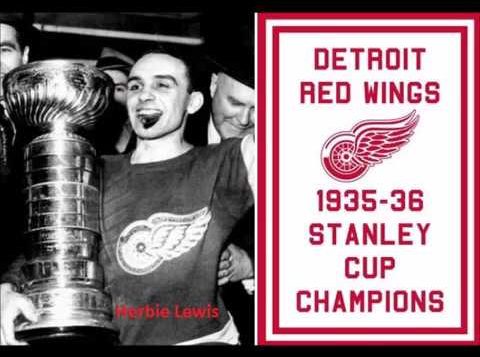This Day in Hockey History – March 24, 1936 – It Ain’t Over Until Overtime’s Over
For fans, what’s not to love about overtime? It basically means more hockey without any additional costs and that at the least your team earns one point if not two. Now what if the amount of overtime doubles or triples the length of the game? In March 1936, the Detroit Red Wings and Montreal Maroons and their fans found out what it felt like to push through the longest NHL game.
About 9,000 showed up at the Forum in Montreal to watch the first game of the best-of-five semi-final series. According to the Montreal Gazette, “most of them stayed to the bitter end, every minute watching and waiting for one or other to crack.” The game began at 8:30 p.m. on Tuesday, March 24, and those diehards remained until it ended at 2:25 a.m. on Wednesday morning.
After the 60 minutes in regulation, the Red Wings and the Maroons had both failed to score. With a completely blank scoreboard, the game went into overtime. As the Gazette summarized, “It was not a spectacular game by any means. It was more a doggedly-fought defensive tussle, in which caution reigned supreme. Relentless back-checking prevailed throughout, stout work by the rival defencemen played a prominent part every step of the way, and backing it all up were the invincible displays of the goaltenders.” The game had not even had that many penalties, with only eight in regulation and one to come in all of the overtime.
The overtime sessions kept coming as the teams could not get anything past the goalies. The Detroit Free Press described the exhaustion creeping in as the overtime dragged on. “Both teams started the sixth period just pretending they had energy.” After that session, they had essentially played two full games back-to-back. The Free Press continued, “As the game went into its eighth period it was evident that a break probably would decide it. They players were missing passes that normally would be easy.” As the sixth overtime session began, the Free Press noted, “Once again the two teams sent in their first lines as the ninth period opened. The two clubs were playing like a team of flagpole sitters. They were trying hard but they found it difficult to skate and shoot.”
Despite the difficulties, one player managed to finally break the all-null tie. At 16:30 of the sixth overtime, Detroit rookie Modere “Mud” Bruneteau shot on the Maroons’ net, and the “puck bobbled up over [Lorne] Chabot’s foot to break the scoreless deadlock.” The right wing had been called up from the Detroit Olympics for that season and then remained with the Red Wings until 1946. Over in the opposite net, Detroit’s Normie Smith had been considered the team’s weakest link, but he blocked 90 shots to earn the NHL’s longest shutout. Oddly enough, Chabot (who blocked 67 shots) had previously held that record.
In total, the game lasted 176 minutes and 30 seconds. The Detroit Free Press exclaimed that the game “shattered all records for longevity in hockey battles.” Similarly, the Montreal Gazette reported, “all records for prolonged overtime play had been eclipsed.” Before that, the record had been held by the Toronto Maple Leafs and Boston Bruins. Their game at Toronto on April 3, 1933 lasted 164 minutes and 46 seconds, which still remains the second-longest NHL game after the 1936 Detroit-Montreal game.
Although the Maroons had won the Stanley Cup just the year before, the 1935-36 season would be Detroit’s. The Red Wings swept the Maroons and went on to defeat the Maple Leafs (in four games) to win their first ever Stanley Cup championship.
Additional Sources:
- Mike Commito, Hockey 365: Daily Stories from the Ice (Toronto: Dundurn, 2018), kindle edition.
- Brian McFarlane, Brian McFarlane’s History of Hockey (Champaign, Ill.: Sports Publishing Inc., c1997), 40.
- Marc T. McNeil, “Bruneteau’s Tally Gives Detroit Win in Sixth Overtime,” Montreal Gazette, 25 March 1936, p. 14.
- Doc Holst, “Red Wings Win Record Game, 1-0,” Detroit Free Press, 25 March 1936, p. 19.
- https://www.nhl.com/news/nhls-longest-playoff-games/c-630492















[…] longest NHL game was the 1936 Stanley Cup Semi Finals between Detroit and the Montreal Maroons. The total game time was 176 minutes and 30-seconds. The game started at 8:30 pm, ending at 2:25 […]